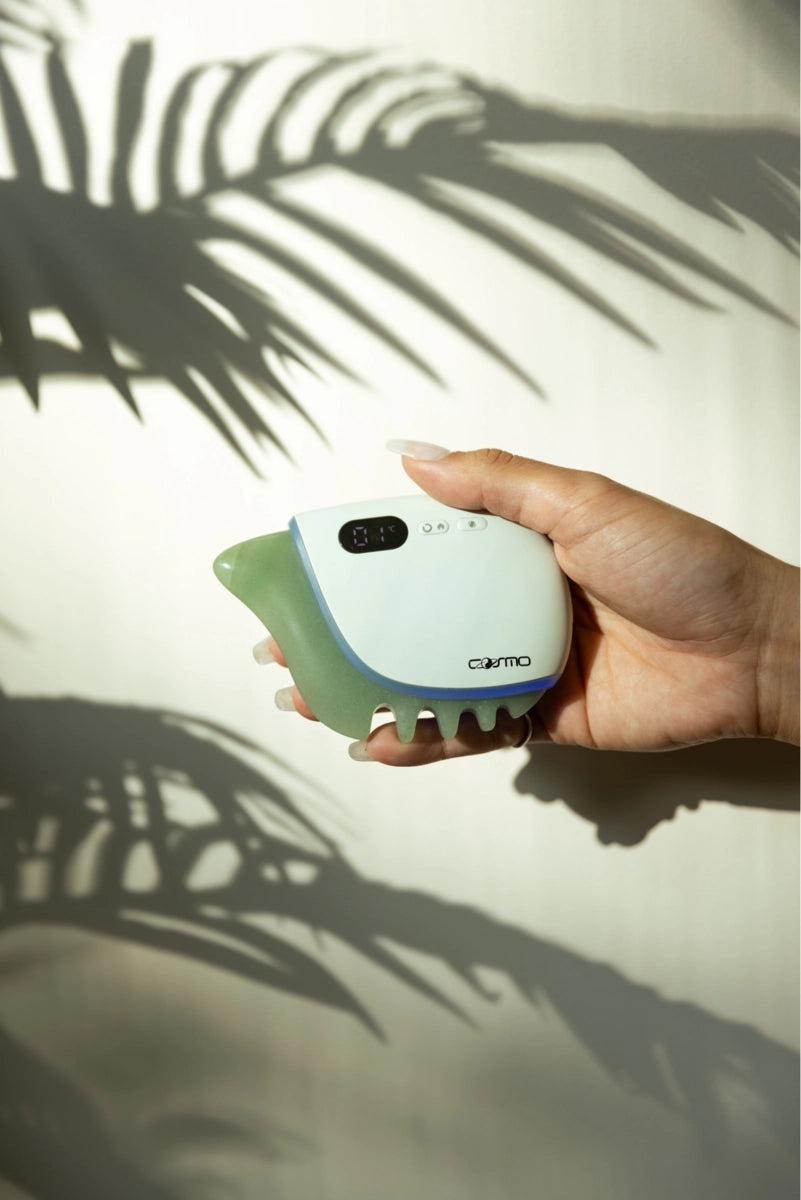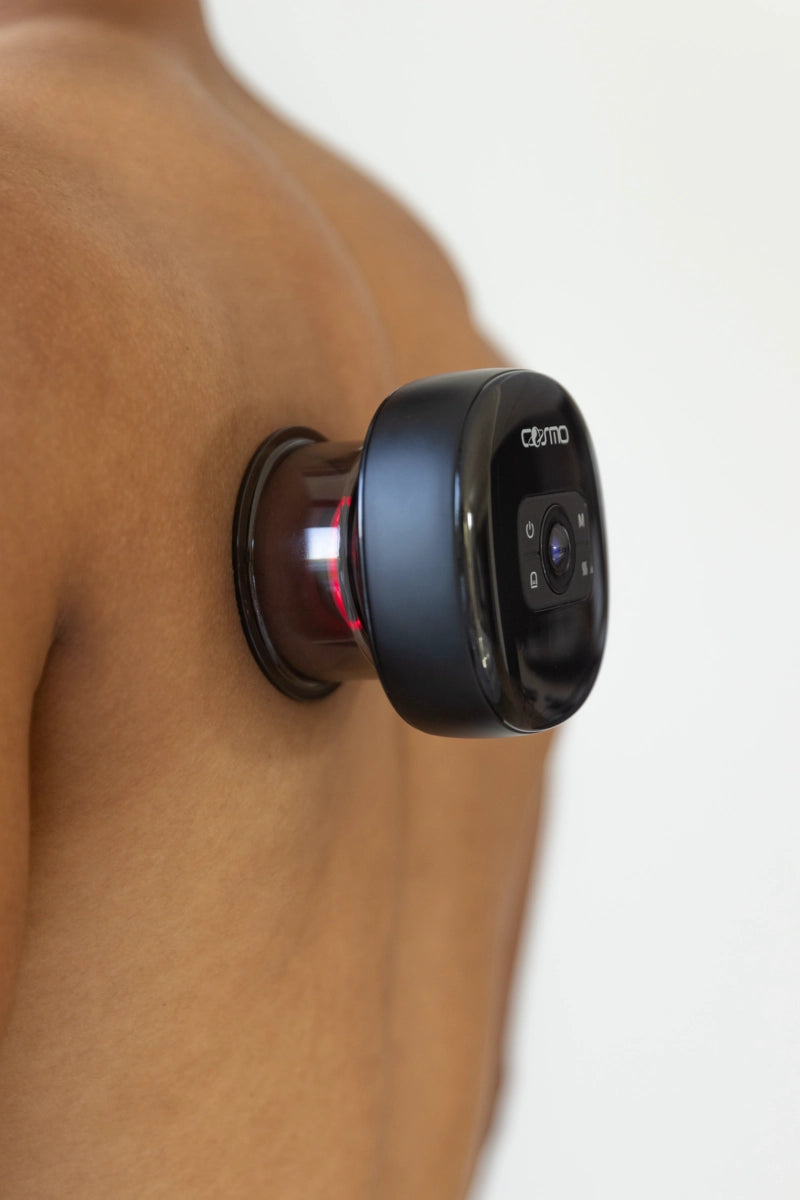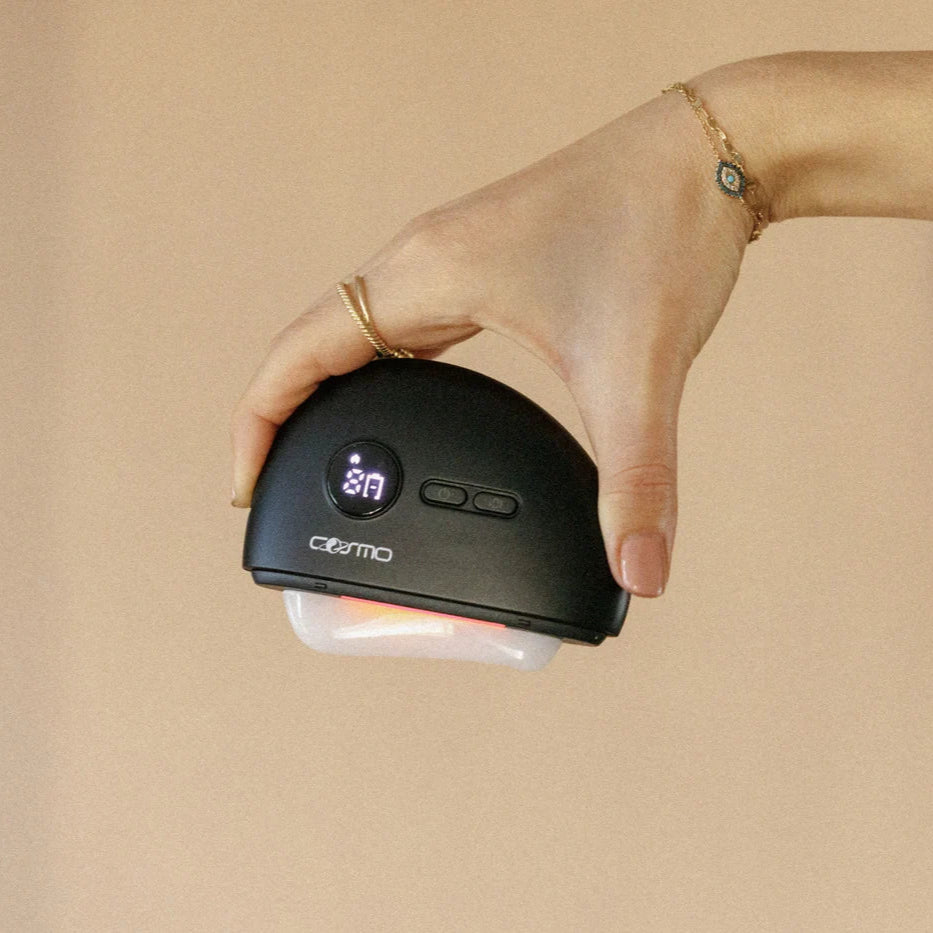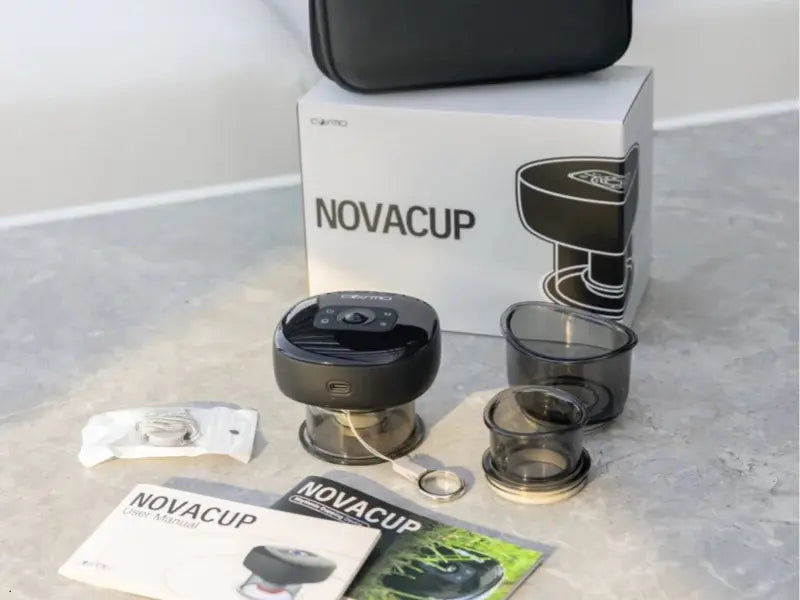Cupping therapy is an ancient practice using suction cups on the skin that has surged in popularity among general wellness seekers and athletes alike. People turn to cupping therapy kits for relief from muscle pain and tightness, as well as to speed up recovery after intense workouts. A common question is how often one should do this to maximize benefits without overdoing it. The optimal cupping frequency depends on individual goals, whether it's occasional pain relief or part of a weekly recovery routine. In this guide, we’ll explore the benefits of weekly cupping treatments, provide general scheduling guidelines, discuss considerations for athletes, and offer tips for safe at-home cupping sessions.
Benefits of Regular Cupping Therapy
Many individuals incorporate cupping into their wellness regimen for its potential health benefits, especially when done consistently. Regular cupping sessions are associated with a range of positive effects:
- Pain Relief: Cupping can alleviate various types of pain, including chronic back and neck pain, muscle soreness, and tension headaches. Improving blood flow to tight or injured areas may help reduce pain signals and promote healing.
- Stress Reduction & Relaxation: The process of cupping often has a calming, massage-like effect. It encourages whole-body relaxation and can lower stress and anxiety levels.
- Improved Circulation: The suction from the cups draws blood to the skin’s surface and underlying tissues, enhancing local blood circulation. Better circulation delivers more oxygen and nutrients to muscles, which can aid recovery and reduce inflammation.
- Enhanced Range of Motion: By loosening tight fascia and muscles, cupping may increase flexibility and joint mobility. Many people report feeling less stiffness and greater ease of movement after repeated sessions.
- Possible Immune and Detox Benefits: Some proponents claim regular cupping helps “detox” the body and boost immunity by stimulating lymphatic flow. While these claims are not yet well-proven by research, cupping is generally viewed as a complementary therapy that can support overall wellness.
Establishing a regular cupping therapy routine can help maintain these benefits over time. Pain relief may be sustained and muscle tension kept at bay, which is why weekly cupping treatments are popular among those managing ongoing issues, such as back pain or athletic recovery.

How Often Should You Do Cupping?
Cupping therapy frequency isn’t one-size-fits-all. It varies based on your health needs, the intensity of your symptoms, and how your body responds to treatment. Below are general scheduling guidelines for body cupping (the common therapeutic cupping on areas like the back, legs, or shoulders) for different situations:
- Occasional, As-Needed Relief: If you use cupping primarily for acute issues, such as a sudden muscle strain, a flare-up of pain, or post-exercise soreness, you can schedule sessions on an as-needed basis. In this case, you might only cup when symptoms arise. For example, someone might do a cupping session after an intense workout or a stressful week to relieve tight muscles and then not do it again until the next time muscle pain returns.
- Weekly or Biweekly Wellness Routine: For general wellness, stress relief, or maintenance of muscle flexibility, many people find benefit in regular sessions once a week or every other week. Integrating cupping therapy into your weekly routine (or every other week) can help prevent tension from building up and maintain robust circulation. This cupping therapy schedule is common if you have chronic desk-job stiffness or minor aches that you want to manage proactively.
- Intensive Therapy for Chronic Conditions: If you’re dealing with a chronic issue – for example, persistent lower back pain, recurring neck/shoulder tightness, or other long-term musculoskeletal problems – practitioners may recommend more frequent treatments initially. It’s not unusual to start with two to three sessions per week for a short period in severe cases. This intensive phase can jump-start relief by repeatedly loosening stubborn muscle knots and reducing inflammation. As your symptoms improve, the frequency is usually tapered down (e.g., from 3× per week to 1× per week, and eventually to biweekly or monthly).
- Monthly Maintenance: Once you have achieved your health goals or gotten significant relief, you might switch to a maintenance schedule. Many use cupping about once a month (or even once every 2–3 months) just to sustain the benefits. These occasional “tune-up” sessions help keep the body in balance and address any new minor issues before they escalate. An individual who no longer experiences daily pain may still opt for a monthly cupping session to maintain good circulation and muscle elasticity.
Every person’s body is different. Some might respond so well that they can reduce frequency sooner, while others with complex chronic pain may need more extended periods of frequent therapy. Always listen to your body. If you feel overly sore or fatigued after a session, it may be a sign to space out your treatments a bit more.
It’s wise to talk with a qualified cupping therapist about your ideal treatment plan. A professional can assess your unique condition and suggest a personalized cupping schedule. This ensures you get the optimal frequency that provides results without overstimulation or adverse effects.
Cupping Frequency by Age Group and Experience Level
It’s important to recognize that age and prior experience with cupping both play a significant role in determining the safest and most effective routine. The body’s ability to recover from cupping, as well as its sensitivity to the therapy, can vary widely across different age groups and levels of familiarity with the treatment. For children and teens (under 18 years old), cupping should only be performed when necessary and always under the supervision of a qualified healthcare provider or Traditional Chinese Medicine practitioner. Younger skin is more delicate and tends to bruise or mark easily, so only the gentlest techniques are appropriate. Sessions should be infrequent, with ample time for recovery between treatments. Wet cupping and fire cupping are generally not recommended for this age group due to the increased risk of skin irritation and other side effects.
Young adults (18–35 years old) typically recover more quickly from cupping therapy and can often tolerate more frequent sessions. Those with active lifestyles or athletic training regimens may benefit from weekly cupping sessions to support muscle recovery and flexibility. However, even in this age group, the intensity of the cupping technique matters: more invasive forms, like wet cupping, should be spaced at least 4–8 weeks apart to allow for proper healing. Dry and moving cupping can be done more regularly, provided there are no lingering marks or soreness.
Middle-aged adults (36–55 years old) may find that their bodies require a slightly slower pace of recovery. As natural healing processes begin to slow, it’s wise to start with biweekly sessions and adjust based on how the body responds. For chronic pain or stiffness, a short period of weekly treatments may be appropriate, but ongoing maintenance typically involves less frequent sessions. Gentler techniques, such as moving or silicone cupping, may be preferable, especially for those who notice increased skin sensitivity. Older adults (56+ years old) should approach cupping therapy with additional caution. The skin tends to thin with age, and blood vessels become more fragile, increasing the risk of bruising and prolonged recovery. Light dry cupping or gentle moving cupping is generally safest, with sessions spaced several weeks apart. If there are any underlying health issues—such as low blood pressure or circulatory problems—frequency should be reduced further and only performed under professional supervision.

Regardless of age, beginners new to cupping therapy should always start slowly, with sessions spaced 1–2 weeks apart. This cautious approach allows time to monitor the body’s response and adjust frequency as comfort and tolerance improve. More experienced individuals, who have established a routine and understand how their body reacts, may gradually increase the frequency of their sessions within safe limits.
Cupping for Athletes: Frequency & Muscle Recovery
Athletes have been among the most high-profile adopters of cupping therapy. From Olympic swimmers to professional football players, many athletes use cupping as part of their recovery regimen. The suction and decompression effect of cupping can help relieve muscle tension, reduce soreness, and possibly even improve range of motion – all valuable for sports performance and recovery.
It’s worth noting that athletic use of cupping is highly individualized. Some athletes swear by weekly cupping, while others use it only occasionally when they feel extreme tightness. In a sports physical therapy context, cupping is often integrated with stretching, foam rolling, and strengthening exercises as part of a holistic recovery strategy. Cupping should complement, not replace, other proven recovery methods. While cupping marks aren’t harmful, an athlete wouldn’t want very tender spots or extensive bruising right before a competition. Thus, they plan sessions so that any marks or mild soreness have time to subside. Most find that the circular marks are painless and fade within a week or so, meaning recovery from the cupping itself is usually quick.
At-Home Cupping Therapy & Devices
Cupping therapy isn’t limited to clinic visits – a growing number of people perform at-home cupping using affordable kits and devices. If you’re a general consumer looking to try cupping for muscle pain or an athlete wanting more frequent therapy, an at-home cupping kit can be a convenient option. Here’s what you need to know about at-home cupping and how to do it safely:
- Types of Cupping Devices: Common cupping kits include silicone cups, plastic pump cups, or a combination. The cups come in various sizes to fit different body areas. Silicone cupping therapy devices are very popular for home use – these soft, flexible cups are squeezed and placed on the skin, creating suction as they rebound to shape. Silicone cups are easy to maneuver and are great for gliding massage cupping: you can apply oil or lotion to your skin and slide the cup around to treat a larger area. Plastic pump cup sets, on the other hand, use a hand pump to create a vacuum in the cup after it’s placed on the skin. These allow more control over suction strength and often come in kits with 6–12 cups.
- Choosing a High-Quality Kit: It’s important to purchase a high-quality cupping kit for safety and effectiveness. Look for medical-grade silicone cups that won’t easily tear or deform. If using pump cups, ensure the valves and pump mechanism are durable and that the set includes various cup sizes for different muscle groups. A good kit will come with instructions, and some even include spare parts or accessories like extension hoses for hard-to-reach areas. Remember that a well-made cup will create a better seal and consistent suction, which leads to a better therapeutic effect. Avoid very cheap, flimsy products – poorly made cups may not hold suction or could have rough edges that irritate the skin.
- At-Home Cupping Frequency: When cupping at home, you should generally follow the same frequency guidelines as professional sessions. Dry cupping can be done roughly once or twice a week on a given area. For most people, starting with one session per week on a target area is a good idea, then adjusting based on how you feel. Do not cup the same area every day – your skin and muscles need time to recover. If you want to do cupping more often for widespread muscle soreness, you might alternate areas. Always err on the side of giving a few days’ rest before re-cupping the same region, especially if marks are still visible.
- Safety and Technique at Home: Follow proper technique to avoid injury. Always keep cups moving or limit the time they stay in one place – generally, about 5–10 minutes is the maximum time to leave a cup in one spot. Exceeding 10-15 minutes can cause excessive bruising or even blisters. When you’re done, release the suction gently (never rip a cup off). After cupping, your skin may have red or purple circles (normal!). Cupping marks from dry cupping typically clear up in a few days to a week, depending on how strong the suction was and individual factors. It’s wise to moisturize and stay hydrated after a session to support circulation.
- Hygiene: Always clean your cups and skin. Wash the cups with warm, soapy water (or as per the kit instructions) after each use to prevent any risk of infection, especially if the cup caused any skin breakage (which can occasionally happen with strong suction or sensitive skin). Disinfecting the cups periodically is a good idea. Likewise, clean the area of skin you plan to cup – and ensure there are no open wounds, rashes, or inflamed skin. Never do cupping over broken skin.
- Know Your Limits: Certain types of cupping should not be done at home by untrained individuals. Wet cupping (hijama), which involves making small cuts to draw out blood, is not suited for DIY. Wet cupping carries a risk of infection and should only be performed by trained professionals under sterile conditions. Moreover, wet cupping is done much less frequently than dry cupping – typically only once every 4–8 weeks at most, because your body needs time to recover from the intentional bleeding. Stick to dry cupping or massage cupping at home, and leave any invasive techniques to the experts.
- Consult if in Doubt: If you’re unsure about doing cupping yourself, consider seeing a professional for a few sessions first. They can demonstrate proper cup placement, suction level, and timing. Once you learn the basics and purchase a cupping device, at-home therapy can be a safe part of your self-care routine for muscle pain relief. Always stop if you experience unusual pain, and consult a healthcare provider if you have any conditions (like a bleeding disorder, severe varicose veins, or are on blood-thinning medication) that might make cupping unsafe for you.
By following these precautions, at-home cupping therapy can be a convenient way to manage aches and pains or speed up recovery after workouts. Just remember that respect for the technique and moderation in frequency are key.

Factors Affecting Cupping Therapy Frequency
Remember to use this checklist to determine how often you should schedule cupping sessions:
- Your Health Goals: Are you seeking pain relief, muscle recovery, stress reduction, or general wellness? Frequency may increase with more acute or chronic needs.
- Your Body’s Response: How do you feel after each session? If you experience excessive soreness, bruising, or fatigue, reduce frequency.
- Type of Cupping Used: Are you using dry, moving, silicone, or wet cupping? Gentler types can be done more often; invasive types like wet cupping require longer recovery.
- Overall Health & Pre-existing Conditions: Do you have any health issues (e.g., skin sensitivity, circulatory problems, low blood pressure) that may require extra caution or less frequent sessions?
- Experience Level: Are you new to cupping or experienced? Beginners should start slowly, with more time between sessions.
- Professional Guidance: Have you consulted with a qualified practitioner for a personalized plan?
- Life Changes or Seasonal Factors: Are you experiencing periods of high stress, intense training, or recovery from illness/injury? You may need to adjust your schedule temporarily.
Cupping therapy can be a powerful addition to your health and recovery routine, whether you’re a weekend warrior nursing sore muscles or someone seeking relief from chronic pain. Finding the optimal frequency is crucial: too infrequent and you might not see lasting benefits, but too frequent and you risk overtaxing your body. A moderate, regular schedule – such as weekly or biweekly sessions for maintenance, with flexibility to increase frequency during acute flare-ups – works well. Athletes might use cupping more aggressively during intense training periods, while others may only need it occasionally when specific issues arise.











